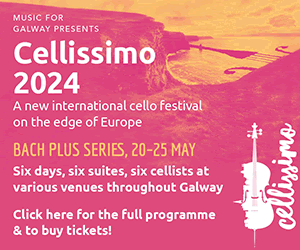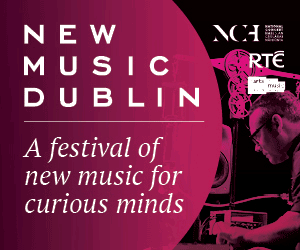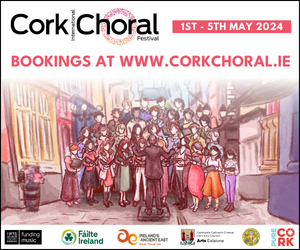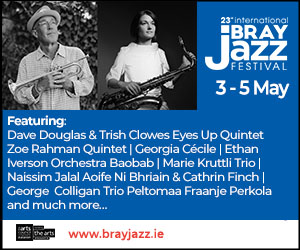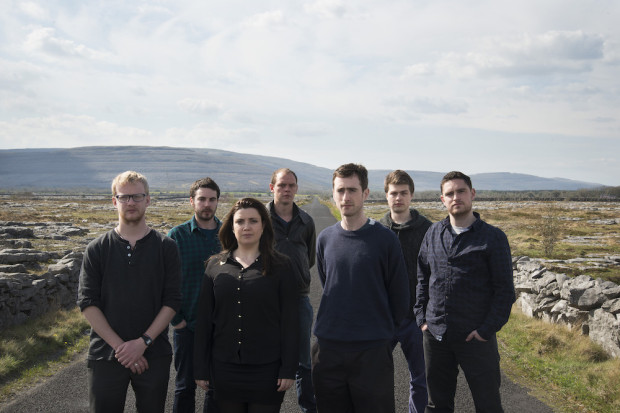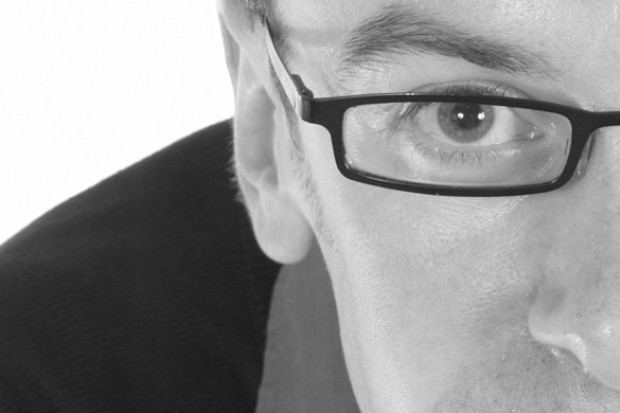New Music: Style Crisis
Style chaos
Despite frequently being mentioned, the actual breadth of stylistic variety among Irish composers is probably widely under-appreciated. If you take a random sweep across c. 100 Irish composers (even sticking to those we can say produce ‘contemporary art-music’) and select a handful, you are sure to get a confusing level of variety. Listening to some recently produced CDs and one concert, I was struck by the fact that cross-comparisons are impossible and irrelevant, such is the lack of common ground. To put it plainly, the art-music composers of this country could be regarded as not existing in a single musical genre.
However each composer considered here has a very clearly defined personal style. Each composer is ploughing an individual and presumably often lonely furrow. So there is localised coherence: composers still believe in being true to themselves. They just don’t believe they can even try to be coherent in respect of one another.
(It is a bit like the expanding universe, where, as time passes, the galaxies move further apart, with increasing speed. So the distance between individual composers’ styles has surely been increasing since the nineteenth century. But are we heading for the dull entropic end cosmologists call ‘heat death’?)
Fundamentally, this mutual incoherence seems largely to arise from differing attitudes to the audience. At present the spectrum of art-music is wider now in this regard than it ever was historically: at one extreme are the composers who write for the audience that has little knowledge of any art music of the past or present (e.g. Glass). At the other extreme are composers who write not really caring how many leave the room during a performance (e.g. Feldman). This lack of a coherent stylistic picture is one of the main reasons contemporary music is ‘difficult’.
Musical handles are all extra-musical
Working without the programme notes, one can characterise the sound-worlds of these four composers: Stephen Gardner consistently writes music which at some point delivers the oomph factor – he is always exploring new ways of building up and teasing expectations. NEVER…NEVER…NEVER could loosely be described as honest modernism. Frank Corcoran’s world is close by, but he has a personal voice that takes him away from musical archetypes, and so while some of his pieces satisfyingly subvert a climax, others speak a private language. Eric Sweeney has moved far away from anything to do with modernism, and has arrived (at least in this new CD) in a modal and tonal world where simple means are the guiding principle. John Gibson has travelled in a similar direction, but simplicity and accessibility are taken even further. Folk melodies are at the heart of many of his pieces.
As to programme notes: what are they for really? At best they are a lubricant helping to glide the listener in the right direction. At worst they become fetishised: mistaken for the substantive issue, the art itself. However, if a composer provides them (not all do, the John Gibson CD does not have any), they should shine a light on either the inspirations or the technical preoccupations of the composer. Doing the latter (which in fact is what Eric Sweeney does) quickly risks losing the general reader, so most nowadays try to give a glimpse of the composer’s world. But this is where it gets dangerous! The extra-musical note that Stephen Gardner gave was about Ian Paisley and his impact on the composer’s childhood surroundings. He risks critics reaching for a sloppy analysis that equates his style with ‘a search for identity in post-peace-process Ireland.’ Frank Corcoran’s notes, for pieces spanning many years, bring all his music together with the phrase: ‘the way forward – new techniques… is the way back to deep experience.’ The deep experience he refers to includes a sort of Collective Unconscious of the Irish nation, an integration of old and current spiritual identity.
And where does that leave composers who believe that their art is entirely abstract? They would argue that all that is very fine for giving the critic a handle, but it is just extra-musical wordage at the end of the day. Eric Sweeney, meanwhile, ties together the technical (circles of notes and rising patterns) and the symbolic (titling a piece ‘Circle of Light’ and bringing the solar eclipse into the programme note).
Then, to further complicate matters, there is religion. The Gibson and Sweeney CDs contain choral mass settings, bringing the audience-friendly issue to the fore. The Corcoran CD has the electro-acoustic piece Quasi Una Missa. (Even Stephen Gardner’s reference to Big Ian…). Music has always partnered worship (in all genres and all cultures), but with contemporary music it is a question of the individual composer’s personal leanings. The four composers here seem to operate on four separate and distinct levels of involvement with religion, from directly devotional to incidental. This seems to mirror the distance or closeness of the styles to ‘modernism’ (for want of a better term). Is this a coincidence or part of a general pattern?
Stephen Gardner’s piece ‘referenced’ religion only as it is manifested in our God-forsaken Irish tribalism. The music (according to the programme note, but I couldn’t hear these) actually quoted ‘the Sash’ and ‘Onward Christian Soldiers’, and an extensive break on two snare drums sounded suspiciously like Lambeg drum patterns to me. Hair-raising! This piece was a game of two halves, with a long, colourful static section that was eventually followed by an extraordinarily strident rhythmic section. A few subtle reminders of the first section provided some of the most piquant moments in the piece, and the ‘onslaught of the last eight minutes’ (in the composer’s own words) was genuinely mood-altering – a fantastic depiction of evangelistic catharsis. I have to acknowledge that in this case, and therefore in others too, there can be a synergy of extra-musical ideas and musical effect. This is despite the fact that current composers disassociate themselves from the dead hand of ‘programme music’. Composers often (but definitely not always) use an extra-musical mental scenario to get the juices flowing, and may or may not reveal this in the notes. I always like to think that the music would be just as effective without that information in hand, but this cannot be verified. It is one of those ‘Schroedinger’s cat’ questions where observation affects the outcome.
Highlights
The availability of Irish contemporary music on CD at all can not be taken for granted by anyone older that thirty, since they can remember the times when only a handful existed. We are now approaching the situation where the public can access a large range of the many styles of contemporary Irish music on CD. There is room for improvement in the area of younger composers, which will hopefully be the next step. For those curious about these and other CDs the best advice would be for them to call in to CMC in Temple Bar (19 Fishamble Street), and listen to these CDs for themselves on the listening posts there. The pieces I would recommend from the CDs discussed here are Frank Corcoran: the Piano Trio or Sweeney’s Farewell; John Gibson: Sliabh Luacra; and Eric Sweeney: Le Cercle de Lumière.
The CDs discussed here are:
Mad Sweeney’s Shadow Frank Corcoran (col legno WWE 1CD 20214)
Circle of Light Eric Sweeney (DCF CD 004)
The John Gibson Collection John Gibson (JG0005)
Stephen Gardner’s Concerto was performed by the RTÉ National Symphony Orchestra/Gerhard Markson on Friday 6th February.
Published on 1 March 2004
John McLachlan is a composer and member of Aosdána. www.johnmclachlan.org







